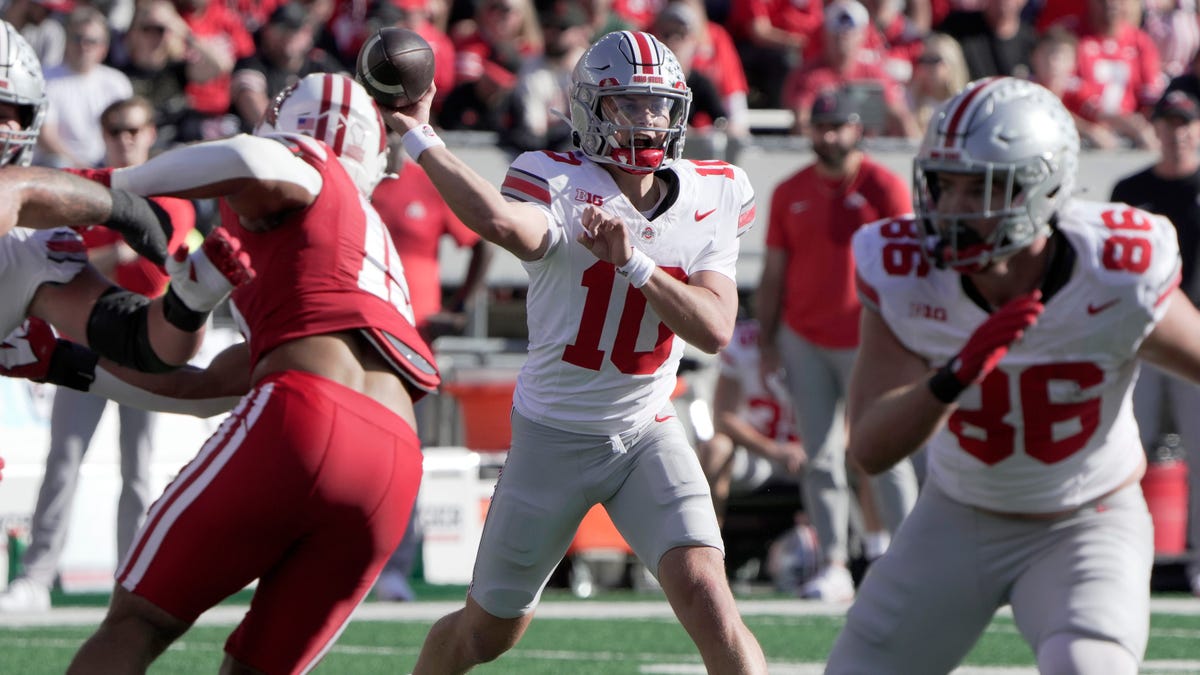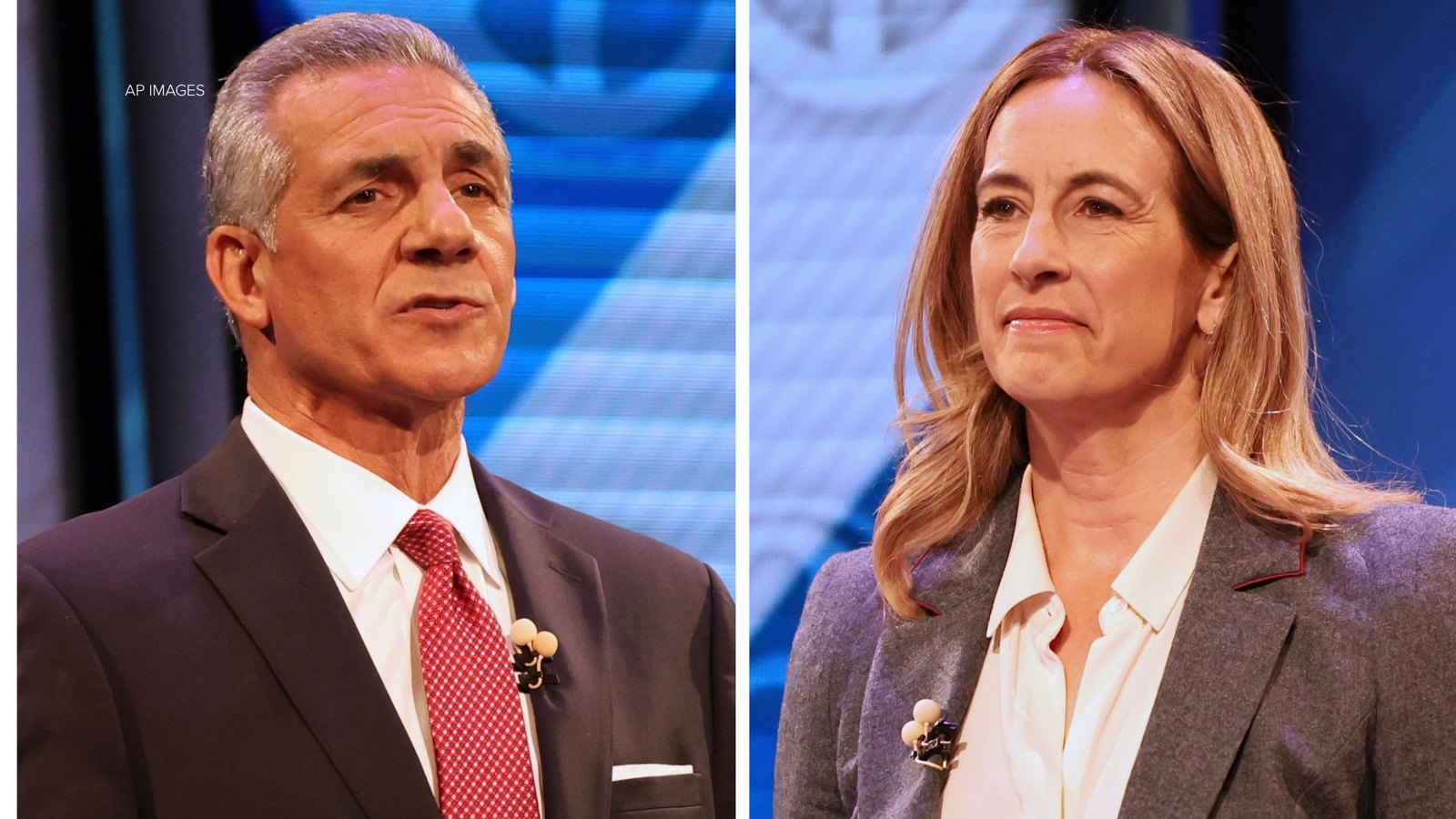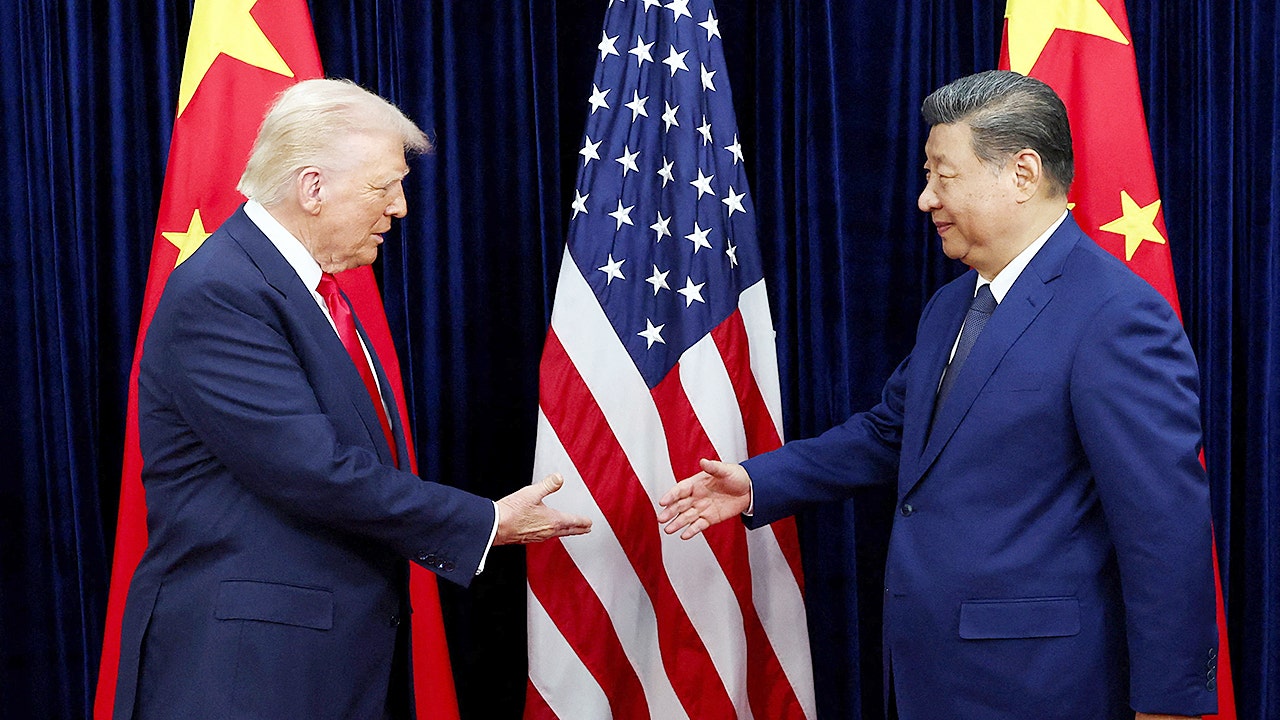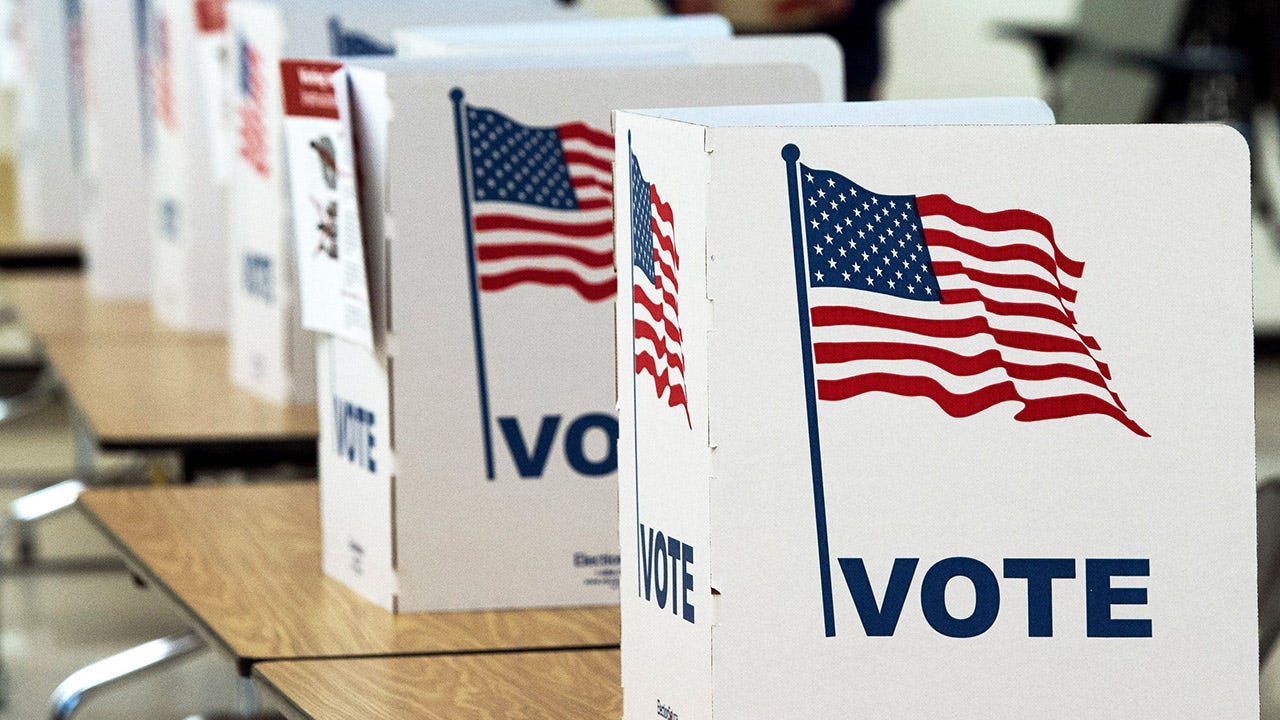Health
Under Pressure, Psychology Accreditation Board Suspends Diversity Standards

The American Psychological Association, which sets standards for professional training in mental health, has voted to suspend its requirement that postgraduate programs show a commitment to diversity in recruitment and hiring.
The decision comes as accrediting bodies throughout higher education scramble to respond to the executive order signed by President Trump attacking diversity, equity and inclusion policies. It pauses a drive to broaden the profession of psychology, which is disproportionately white and female, at a time of rising distress among young Americans.
The A.P.A. is the chief accrediting body for professional training in psychology, and the only one recognized by the U.S. Department of Education. It provides accreditation to around 1,300 training programs, including doctoral internships and postdoctoral residencies.
Mr. Trump has made accrediting bodies a particular target in his crusade against D.E.I. programs, threatening in one campaign video to “fire the radical Left accreditors that have allowed our colleges to become dominated by Marxist maniacs and lunatics” and “accept applications for new accreditors.”
Department of Justice officials have pressured accrediting bodies in recent weeks, warning the American Bar Association in a letter that it might lose its status unless it repealed diversity mandates. The A.B.A. voted in late February to suspend its diversity and inclusion standard for law schools.
The concession by the A.P.A., a bastion of support for diversity programming, is a particular landmark. The association has made combating racism a central focus of its work in recent years, and in 2021 adopted a resolution apologizing for its role in perpetuating racism by, among other things, promulgating eugenic theories.
Aaron Joyce, the A.P.A.’s senior director of accreditation, said the decision to suspend the diversity requirement was driven by “a large influx of concerns and inquiries” from programs concerned about running afoul of the president’s order.
In many cases, he said, institutions had been instructed by their legal counsels to cease diversity-related activities, and were worried it might imperil their accreditation.
“The Commission does not want to put programs in jeopardy of not existing because of a conflict between institutional guidelines” and accreditation standards, Dr. Joyce said.
He would not describe the tally of the March 13 vote, which followed about three weeks of deliberation. “Nothing about this was an easy decision, and not taken lightly,” he said. “The understanding of individual and cultural diversity is a core facet of the practice of psychology.”
The commission opted to retain another diversity-related standard: Programs must teach trainees to respect cultural and individual differences in order to treat their patients effectively. In reviewing each standard, the commission weighed “what may put programs in a compromised position” against “what is essential to the practice of psychology that simply cannot be changed,” he said.
Kevin Cokley, a professor of psychology at the University of Michigan, said he was “absolutely devastated” to learn of the A.P.A.’s decision on a psychology listserv this week.
“Frankly, I think the decision is really unconscionable, given what we know of the importance of having diverse mental health providers,” Dr. Cokley said. “I don’t know how the A.P.A. can make this sort of decision and think that we are still maintaining the highest standards of training.”
He said he thought the A.P.A. had acted prematurely, and could have waited until it faced a direct challenge from the administration.
“I think that there is always a choice,” he said. “I think this is a classic example of the A.P.A. engaging in anticipatory compliance. They made the move out of fear of what might happen to them.”
According the data from the A.P.A., the psychology work force is disproportionately white. In 2023, more than 78 percent of active psychologists were white, 5.5 percent were Black, 4.4 percent were Asian and 7.8 percent were Latino. (The general population is around 58 percent white, 13.7 percent Black, 6.4 percent Asian and 19.5 percent Latino.)
The demographic breakdown of graduate students in Ph.D. programs, in contrast, is more in line with the country. According to 2022 data from the A.P.A., 54 percent of doctoral students were white, 10 percent were Black, 10 percent were Asian and 11 percent Latino.
John Dovidio, a professor emeritus of psychology at Yale and the author of “Unequal Health: Anti-Black Racism and the Threat to America’s Health,” said the A.P.A.’s focus on diversity in recruiting had played a major part in that change.
“It really is something that departments take very, very seriously,” he said. “I have seen the impact personally.”
A memorandum announcing the decision describes it as an “interim action while awaiting further court guidance” on Mr. Trump’s executive order, which was upheld by a federal court of appeals on March 13. The order, it says, “is currently law while litigation is pending.”
Cynthia Jackson Hammond, the president of the Council for Higher Education Accreditation, which coordinates more than 70 accreditation groups, said it is “unprecedented” for such bodies to receive direct orders from the government.
“The government and higher education have always worked independently, and in good faith with each other,” she said. “Throughout the decades, what we have had is a healthy separation, until now.”
The federal government began taking a role in accreditation after World War II, as veterans flooded into universities under the G.I. Bill. Accrediting bodies are regularly reviewed by the National Advisory Committee on Institutional Quality and Integrity, which advises the Secretary of Education on whether to continue to recognize them.
But government officials have never used this leverage to impose ideological direction on higher education, Ms. Jackson Hammond said. She said diversity in recruitment remains a serious challenge for higher education, which is why the standard is still so commonly used.
“If we think about what our institutions looked like before,” she said, “that might be a barometer of what it’s going to look like if there’s not attention paid.”

Health
TikTok’s Protein Matcha Burns Belly Fat and Is Easy To Make!

Use left and right arrow keys to navigate between menu items.
Use escape to exit the menu.
Sign Up
Create a free account to access exclusive content, play games, solve puzzles, test your pop-culture knowledge and receive special offers.
Already have an account? Login
Health
Happiness expert shares 6-step morning routine that boosts mood and productivity

NEWYou can now listen to Fox News articles!
Starting the morning on the right foot can pave the way for a successful day.
A new wellness trend focuses on the “5 to 9 before your 9 to 5,” which entails a healthy regimen between the hours of 5 a.m. and 9 a.m. before heading to work.
Behavioral scientist and happiness expert Arthur Brooks, professor at the Harvard Kennedy School and Harvard Business School in Boston, has proven these benefits through his six-step morning protocol to live more positively.
THAT MORNING CUP OF COFFEE COULD BE THE KEY TO A HAPPIER DAY, NEW STUDY SUGGESTS
In an in-person interview with Fox News Digital, Brooks broke down each of the six steps that set him up for a productive day, which he says have “dramatically improved” his life.
“You need to be disciplined, and you need to structure your day, and it turns out that what you do first thing in the morning really matters a lot,” he said. “I follow [this] almost every day.”
Behavioral scientist and happiness expert Arthur Brooks joins Fox News Digital for an interview. (Angelica Stabile; Fox News Digital)
1. Wake up before dawn (4:30 a.m.)
Brooks said he was not a morning person for years, as he was a musician in his 20s who never woke up before sunrise and thought of himself as a “night owl.”
COFFEE CRAZE HITS HOME AS MORE AMERICANS EMBRACE IN-HOUSE CAFÉ CULTURE
“The truth of the matter is, you can change your chronotype,” he said. “You can be more of a morning lark. It’s actually not that genetic, and it’s a really worthwhile endeavor to try to change that.”
“If you get up before dawn, you’ve kind of won the day, but not just morally — you’ve won neuro-scientifically.”

Research suggests that waking up before dawn promotes better focus, creativity and mood. (iStock)
According to the “Office Hours” podcast host, research suggests that waking up before dawn promotes better focus, creativity and mood. This is rooted in an “ancient idea of Indian wisdom” called Brahma Muhurta, which means “creator’s time” in Sanskrit.
“But it’s not just religion. It really does have a lot of science behind it,” Brooks said. “I get up at 4:30 a.m. — it works for me; it works with my schedule. You’ve got to figure out what yours is. But if you’re getting up when the sun is already warm, you’re already kind of behind the eight-ball.”
VIRAL MORNING WELLNESS ROUTINE PROMISES MORE ENERGY AND FOCUS BY NOON
Brooks noted that he uses a real alarm clock to wake up, as he keeps his phone out of the bedroom at night to avoid overexposure.
2. Move your body (4:45 a.m.-5:45 a.m.)
Brooks begins his day with a workout in his home gym, noting the importance of getting “real exercise” first thing in the morning.
Armed with an electrolyte drink, he typically does 75% resistance training and 15% Zone 2 cardio — steady-state aerobic exercise that feels easy to moderate — for an hour.
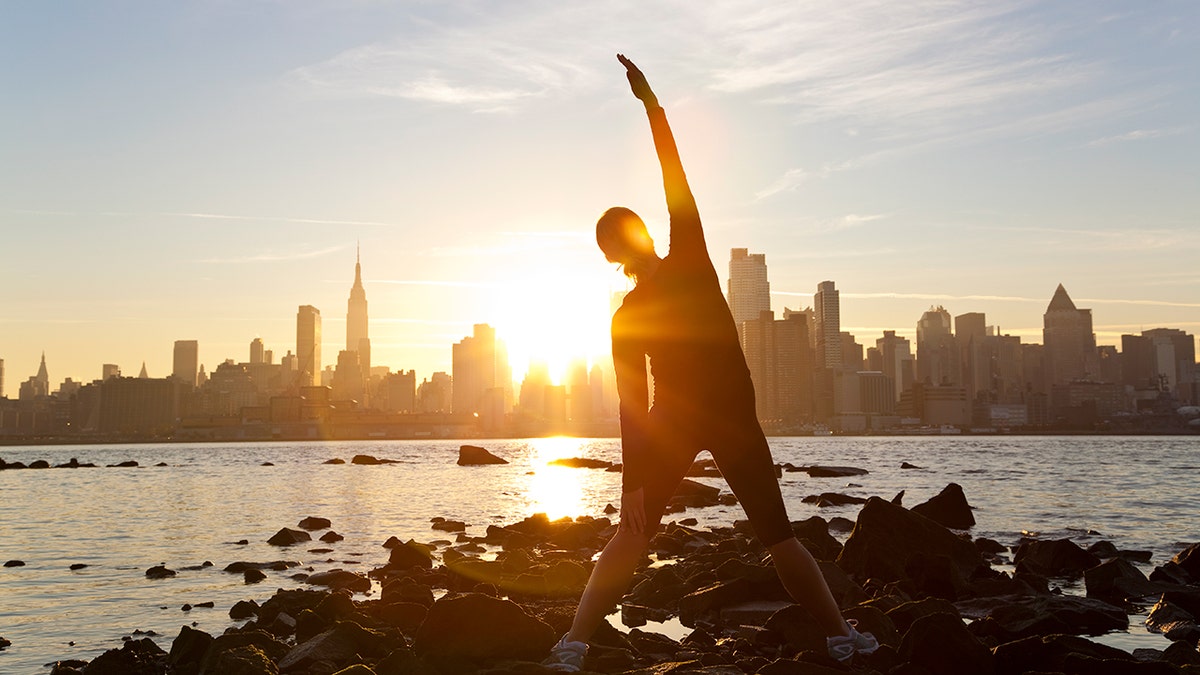
For those who are just starting out with this new schedule, Brooks recommends light exercise, like walking. (iStock)
There are a variety of ways to exercise, from endurance to yoga, Brooks noted. “If the first thing you do when you wake up is pick up heavy things and run around, you’re going to have a much better day,” he added.
TIKTOK’S 50-JUMP RITUAL IS REDEFINING HOW PEOPLE WAKE UP AND WARM UP
For those who are just starting out with a fitness and early wake-up routine, Brooks recommends light exercise, like walking.
3. Get metaphysical (6:30 a.m.)
After showering, Brooks heads out of the house for a 6:30 a.m. Catholic mass.
While not everyone is Catholic, or even religious, Brooks recommends participating in some type of “transcendent activity” that connects the body and soul.
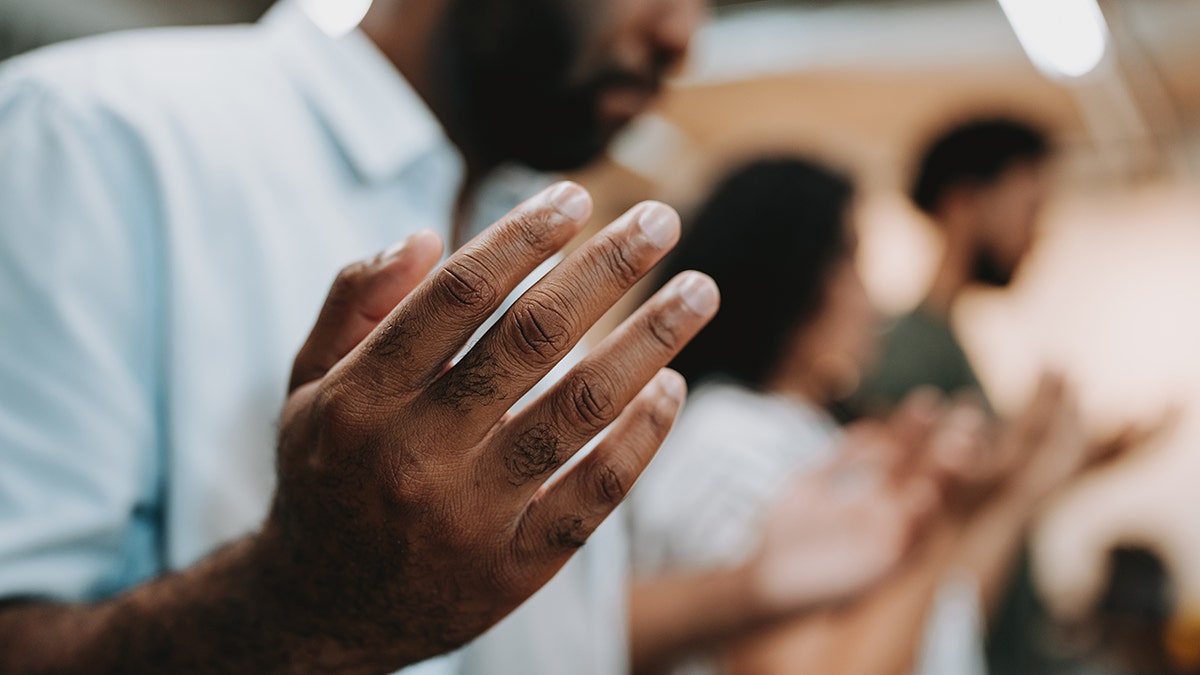
Worship and meditation are great for “de-focusing” yourself, Brooks said. (iStock)
“You need to do something to not focus on yourself,” he said. “Worship is great for that. Meditation is good for that. There are a lot of different ways you can actually undertake this, but the whole point is to zoom out and get little.”
‘GREAT LOCK-IN’ BECOMES FALL’S HOTTEST WELLNESS TREND — HERE’S WHAT IT MEANS
“When I am on the road, which is about half the time, I stay in places where there’s a morning mass if I can possibly find it, such that I’m focusing on my soul just as much as I focus on my body.”
4. Coffee (7:15 a.m.)
Most people who wake up before 5 a.m. will feel inclined to immediately head for the coffee machine, but Brooks discouraged this impulse to reach for caffeine first thing in the morning.
CLICK HERE TO DOWNLOAD THE FOX NEWS APP
Caffeine blocks a chemical in the brain called adenosine, which swarms the brain at night and makes you groggy in the morning. As a result, drinking it makes you feel more alert.
But Brooks said this is “not the best use” for coffee, as he instead recommends a morning workout to help clear any remaining adenosine.
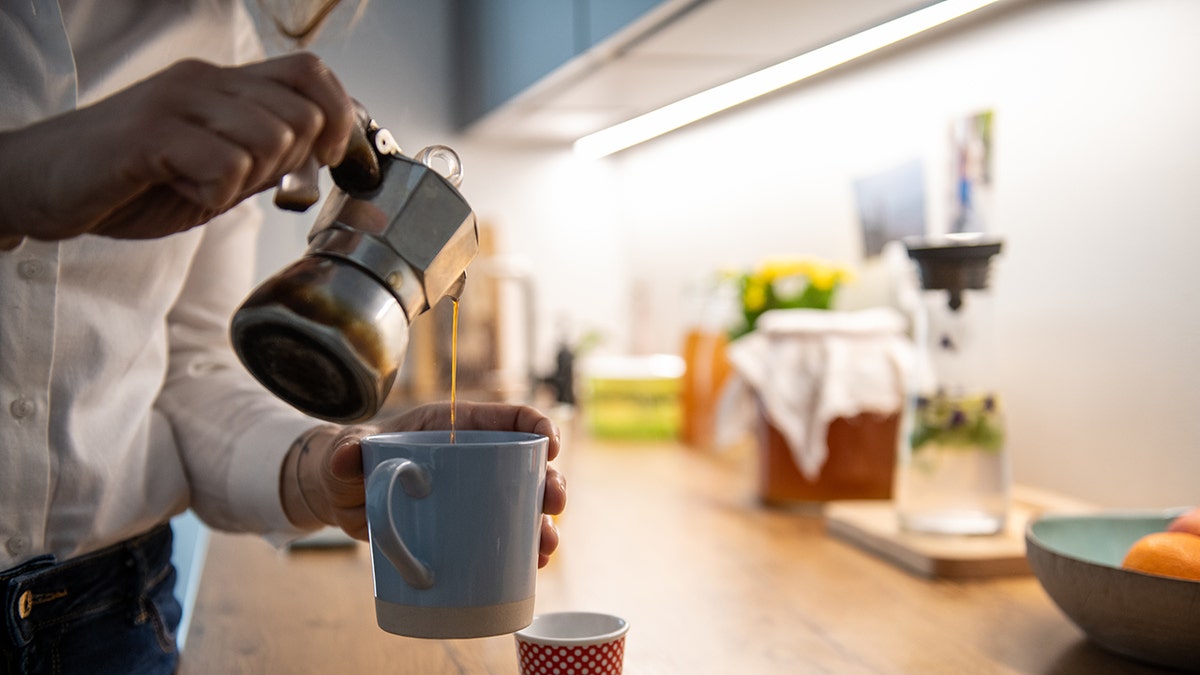
Drinking coffee first thing in the morning is “not the best use” for max energy, according to Brooks. (iStock)
By the time coffee is introduced into the system, about an hour or two after waking, the brain is clear of adenosine, and the caffeine can focus on providing the body with energy.
CLICK HERE TO SIGN UP FOR OUR HEALTH NEWSLETTER
“You’re not going to wake up with caffeine, you’re going to focus with caffeine,” he said. “It’s going to vacuum dopamine into your prefrontal cortex, and you’ll be more creative, you’ll be more stimulated to come up with new ideas, and that means you’re setting yourself up for a brilliant workday.”
5. Eat a high-protein breakfast (7:30 a.m.)
Protein is “critically important” for getting the most return from your morning workout, building strong muscles and shaping a balanced diet, according to Brooks.
For breakfast, he prefers non-fat Greek yogurt, topped with walnuts for micronutrients, mixed berries for antioxidants, whey protein and sometimes stevia for sweetness.
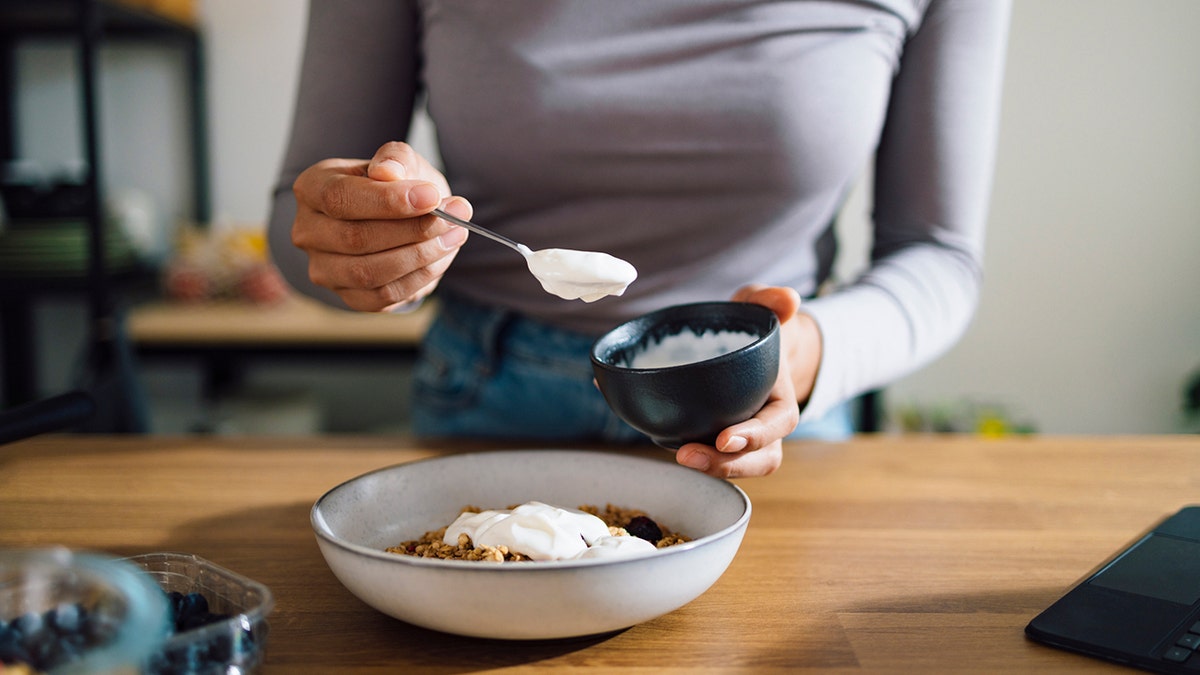
Clean protein can help build strong muscles and boost mood, the expert said. (iStock)
“I get 60 grams of protein with less than 400 calories. And man, I am ready to go,” he said. “With that caffeine and that meal, I’m ready to work.”
These “clean protein” breakfast options also contain tryptophan, the chemical best known for its presence in turkey that can cause sleepiness. In smaller doses, tryptophan can improve mood and mellow out the nervous system, Brooks noted.
6. Enter a flow state (8:00 a.m.)
Between 8:00 a.m. and noon, Brooks said he gets four solid hours of productivity and creativity, “with a level of focus I was never able to get earlier in my life before I set up this morning protocol.”
TEST YOURSELF WITH OUR LATEST LIFESTYLE QUIZ
He enters and remains in a “state of flow” during his morning work, uninterrupted by social media or phone notifications.
“I can do more in four hours than I used to be able to do in two days. And I’m happier when I do it,” Brooks said.
CLICK HERE FOR MORE HEALTH STORIES
By the time he eats another high-protein meal for lunch, he has completed his essential tasks and can take on other objectives in the latter part of the day.
“It’s really important that you not wreck that period of focus and concentration, spoiling it with your devices,” Brooks added. “Stay clean. Stay focused. Stay creative. And stay happy.”
Health
Ivy League Doctor Shares 5 Surprising Hacks To Balance Blood Sugar

Use left and right arrow keys to navigate between menu items.
Use escape to exit the menu.
Sign Up
Create a free account to access exclusive content, play games, solve puzzles, test your pop-culture knowledge and receive special offers.
Already have an account? Login
-

 New York1 week ago
New York1 week agoVideo: How Mamdani Has Evolved in the Mayoral Race
-

 News1 week ago
News1 week agoVideo: Federal Agents Detain Man During New York City Raid
-

 News1 week ago
News1 week agoVideo: Driver Crashes Car Into Security Gate Near White House
-

 News1 week ago
News1 week agoVideo: Inside Our Reporter’s Collection of Guantánamo Portraits
-

 World1 week ago
World1 week agoTrump to host NATO chief at White House as Putin meeting collapses
-

 Politics1 week ago
Politics1 week agoJack Smith defends subpoenaing Republican senators’ phone records: ‘Entirely proper’
-

 News1 week ago
News1 week agoNew York City ICE raid nets 9 arrests of illegal aliens from West Africa, 4 protesters also arrested
-

 News4 days ago
News4 days agoWith food stamps set to dry up Nov. 1, SNAP recipients say they fear what’s next


